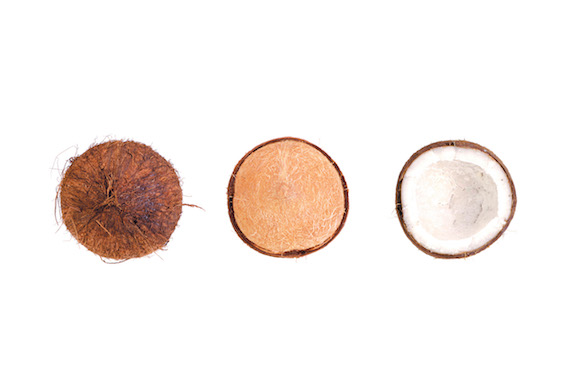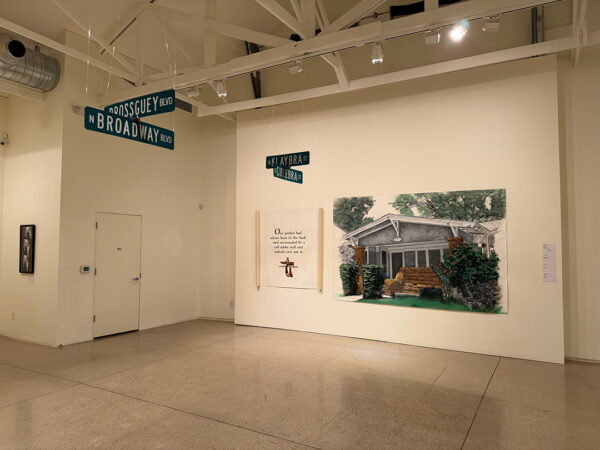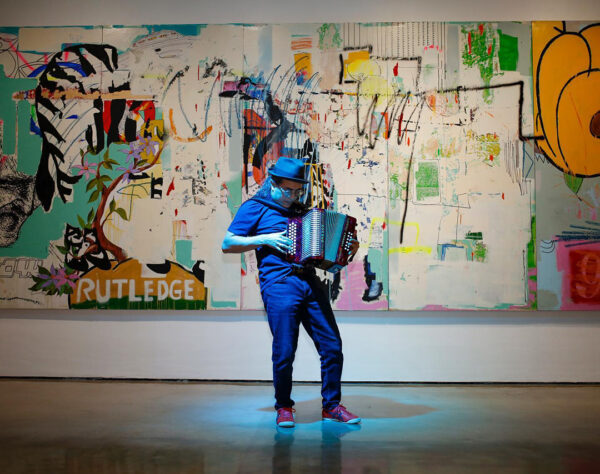The words we use matter. Language is subjective. Even when we’ve chosen our words intentionally, we can never be sure how they might be perceived by others. A single word can hold a multitude of meanings for different people. A word that sparks pride for some may conjure animosity for others. Our unique experiences shape our perspectives, so much so that a true consensus can often be difficult to come by. Across history and even today in Latina/e/o/x art communities, terms used to describe art have caused friction.
Background: San Antonio, 1996
Last year, during a trip to San Antonio, a story was relayed to me about the beloved and inspirational educator, curator, and art historian, Frances Colpitt. Prior to moving to Fort Worth, where she worked at Texas Christian University (TCU) as the Deedie Rose Potter Chair of Art History for two decades, she was a professor and department chair at the University of Texas at San Antonio (UTSA). During her time at UTSA, she organized many exhibitions, one of which, in 1996, sparked some controversy, in part because of the language she used around the show. I was told that Colpitt attempted to use the phrase “post-Chicano,” which upset local artists (though the majority of the exhibiting artists were unphased, one artist is said to have backed out from the exhibition) who disagreed with the term. To the dissenters, the Chicano Art Movement was still very active, and the term “post” insinuated that it was in the past and something had replaced it.
Colpitt did not establish the phrase “post-Chicano art.” Independent scholar Max Benavidez coined the term in 1990 in a catalog for the exhibition Post-Chicano Generation in Art: “Breaking Boundaries.” Among the artists included in the exhibition were Texans Benito Huerta and Kathy Vargas. Benavidez points to a differentiation that “post-Chicano” artists were more interested in portraying individual experience rather than trying to encapsulate and speak to collective Chicano experiences.
Though we do not know for certain if Colpitt used that phrase and how she might have intended it, perhaps we can assume that she was not suggesting that the Chicano Art Movement had ended, but instead was employing “post” in the way the art world tends to use it — suggesting a connection between contemporary artists and a movement rooted in the recent past that undoubtedly inspired them. Regardless of her intentions, dozens of Latino artists penned a letter to the university demanding better representation on its staff and pointed to the exhibition as a misstep by someone who “had no knowledge of the community and/or the culture in which [the] work is based.” Prior to opening the show, Colpitt adjusted the title to Synthesis and Subversion: A Latino Direction in San Antonio Art.
Now, nearly 30 years later, multiple venues across San Antonio are paying homage to Colpitt, who died in 2022, in a series of concurrent exhibitions. Ruby City revisits Colpitt’s curatorial vision for that 1996 show, which was to showcase artists with a “particular sensibility informed by autobiography, abstraction and the everyday,” with Synthesis & Subversion Redux. The new exhibition features a slate of contemporary local artists. UTSA has organized a catalog to celebrate the concurrent exhibitions and the legacy of Fran Colpitt. In an essay within the catalog, Synthesis & Subversion Redux’s co-curators Elyse Gonzales (Director of Ruby City) and Mia Lopez (Curator of Latinx Art at the McNay Art Museum) address the controversy more directly, delving into the history of the original exhibition and how it divided generations of local artists. (Gonzales and Lopez’s essay indicates that Colpitt was attempting to use the word “Chicano” around the show rather than “post-Chicano.” As time passes and facts and memories blur, it can be hard to parse the truth of the time versus historical editorializing.)
The story of the 1996 exhibition has been on my mind ever since I heard it. I’ve gone back and forth about the terms “post-Chicano Art” and “Chicano Art,” and about the artists’ concerns that, in some ways, ask the question, “Who is best equipped to tell these stories?”
In a fall 1997 issue of Voices of Art, John Ewing spoke with San Antonio artist Chuck Ramirez, one of the artists in the original show, about the UTSA controversy. Ramirez acknowledged the tension between artists who work within “a traditional Chicano [Art] vocabulary” and artists they perceived to be “assimilated into white culture.” But, he goes on to concede that at the heart of their letter were valid concerns. Ramirez is quoted as saying, “UTSA is lacking in the promotion of Latino art in terms of art faculty. It’s been a middle-aged, white man’s world over there. Perhaps they feel slighted by the fact that an Anglo curator produced [the exhibition], someone who had never curated a show of Latino art before. The larger picture is this: here’s a university in a city with a 60% Latino population, and we’re still butting heads over these issues, trying to get a piece of the pie.”
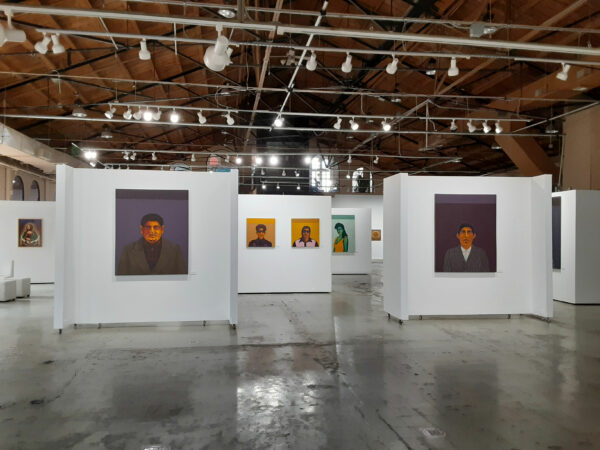
Installation view of “César A. Martínez: En Mi Casa” at the Laredo Center for the Arts. Photo: Liz Kim
César Martínez briefly discussed the events in a 1997 oral history interview with the Smithsonian Latino Center. While he didn’t specify the term “post-Chicano,” he referred to Colpitt’s desire to organize an exhibition of “The New Latino Art.” Rolando Briseño also touches on the subject in a 2004 oral history interview with the Smithsonian. Like Ramirez, he too pointed to the lack of representation among UTSA’s art faculty, even eight years after the controversial exhibition.
Defining Terms
Since first learning about the original Synthesis & Subversion exhibition, I’ve thought a lot about the terms “Chicano Art,” “post-Chicano Art,” and “Latinx Art” — how they are used, who uses them, and what they mean to different people. As a third-generation Mexican American who grew up in a very assimilated family in North Texas, I am not the expert on these terms. I have my own ideas about what they mean, based on my knowledge of and experiences in the art world, but I was more curious to hear from others across the state about what these labels mean to them.
Last month, I put together a short survey and sent it out to Latinx artists across the state. I invited them to pass the survey along to others and ultimately ended up with 24 responses. Two dozen responses is not a large sample set, but I was pleased with the range of ages of those who participated: 12.5% in their 20s, 41.7% in their 30s, 29.2% in their 40s, 12.5% in their 50s, and 4.2% in their 80s. Most of the respondents wear many hats in the art world: 70.8% are artists, 37.5% are curators, 37.5% are arts administrators, 12% are educators, 8.3% are arts writers, and 4.2% work in the performing arts.
Within the survey, I asked respondents to note their race and ethnicity. All but one identified as “Hispanic or Latina/o/x,” and some checked multiple boxes, indicating their identity as “White” and/or “Black or African American.” The one participant who did not select “Hispanic or Latina/o/x” self-identified as Mexican American, which spoke to my follow-up question in the survey: while the first race and ethnicity question provided check boxes and an “other” category, the second question provided an opportunity for those who identify with the category of “Hispanic or Latina/o/x” to share the specific term with which they identify. Nine of the respondents used the term “Mexican American,” five indicated “Mexican” or noted they were born in Mexico and immigrated to the U.S.; two used “Tejana” or “Tejano,” and two used “Latina” or “Latino.” Beyond that, some individuals also used terms like “Chicana,” “Black Latina,” and “mixed Xicana of Indigenous descent.” Others were more specific, like the respondent who noted, “third generation American, born of Mexican, Spanish, Italian, and French descent.” I share all of this to illustrate the complexity of race, ethnicity, and cultural identifications used by just a small sample set of people in the art world.

Judithe Hernández, “Santa Desconocida,” 2016, pastel on paper, 30 x 88 inches. Courtesy of The Cheech Center Collection of the Riverside Art Museum
Chicano Art
Many of the survey participants spoke about Chicano Art as work created by Mexican American artists and related to and/or inspired by the U.S. historical and political Chicano Movement. Some considered it strictly a historical term referring to art created between the 1940s and 1960s, while others spoke about the continuation of the art movement by contemporary artists. Jenelle Esparza, a Corpus Christi-born San Antonio-based artist and Director of Education at the McNay, remarked, “While not all Latinx artists identify as Chicano/a/x, it is a very important movement and part of the larger story and trajectory, and it’s important to recognize that Chicano Art is not a thing of the past but very present and ongoing.”
One anonymous participant said, “The word has been dragged through the mud with sexist, ignorant, racist propaganda.” It is unclear if the respondent was talking about the term “Chicano,” which originated as a racist and classist term, or if they were speaking specifically about “Chicano Art.”
Cande Aguilar, a Brownsville artist, described Chicano Art as “a vibrant and dynamic expression of cultural identity rooted in the lived experiences of the Mexican-American community.” He continued, “Chicano Art is a creative dialogue that blends personal narratives with collective cultural memory, elevating everyday aesthetics of the barrio into a dynamic visual language.”
Post-Chicano Art
A handful of the respondents were unfamiliar with the term post-Chicano Art, and to be fair, it is the term included here that I am least familiar with. Those who were aware of it said it refers to art by Chicano artists that continues traditions of the Chicano Art Movement while also shifting and evolving. While that broad understanding was shared among most, the nuances of what that looks like and what themes are explored in post-Chicano Art varied by my survey’s respondents.
Aguilar explains, “While traditional Chicano art was closely tied to the civil rights movement of the 1960s and 1970s, emphasizing activism, cultural pride, and political resistance, post-Chicano Art often moves beyond those original frameworks, reflecting a broader, more global, and hybridized perspective.”
Veronica Ibargüengoitia, a Mexico City-born Dallas-based artist, commented, “Post-Chicano artists are interested in questioning identity, examining societal roles, and exploring themes of gender and how these roles are shaped within an increasingly diverse and globalized society.”
Renato Olmedo-González, a Salt Lake City-based arts administrator, noted, “With a background in Art History, I associate this term [post-Chicano Art] with conceptual and experimental approaches to artmaking, influenced by artists like ASCO. I also associate it very closely with the ideas/artworks/artists presented in LACMA’s Phantom Sightings exhibition. Unlike ‘Chicano Art,’ I have yet to find an artist who I’ve worked with that would label their own work as ‘Post-Chicano Art.’”
Rigoberto Luna, a San Antonio-based independent curator, responded, “Post-Chicano Art moves beyond the political and social agendas championed by earlier Chicano Art. Rather than being in opposition to those roots, it looks to broaden the conversations and concerns of a generation increasingly engaged with the complex duality of the Mexican American experience while embracing their multicultural identities. It moves past purely political motivations, introducing a wider range of themes and concepts reflecting an awareness of and engagement with American pop culture and art movements influenced by Western and European styles. This generation is not only exploring their cultural heritage, but is also in dialogue with broader artistic movements, creating more diverse and expansive artwork.”
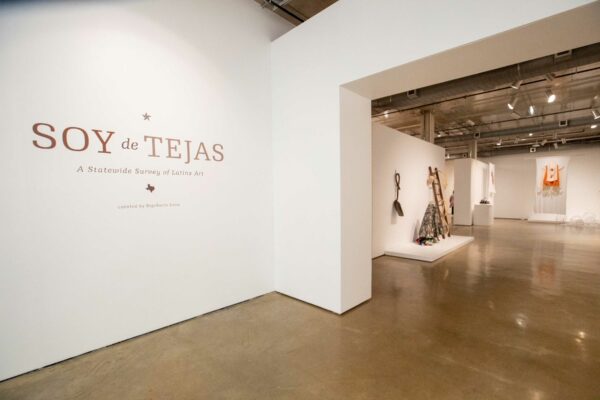
Installation view of “Soy de Tejas,” Courtesy of the City of San Antonio Department of Arts & Culture
Latinx Art
The term “Latinx Art” is where I saw the most consensus among the respondents. In general, people noted that the term is an umbrella that attempts to group artists from the Latin American diaspora. Some noted that the term “Latinx” emerged from academia as a gender-neutral alternative to Latino or Latina. Fort Worth-based artist Christopher Nájera explained, “Originally for me, [Latinx Art] meant queer art that is for and from the Latinx community, but it’s all-encompassing now.”
Karla Garcia, a Ciudad Juárez-born Dallas-based artist, noted, “I don’t like using the term Latinx because, in Mexico, we use the term Latine Art to discuss LGBTQ issues and themes in artworks. The ‘X’ is mostly used as a bridge or term linking to Indigenous heritage. It is confusing in the U.S. to use LatinX to refer to gender identity as gender neutral or non-binary.”
Some respondents shared complex feelings about this term, stating that it can be helpful to have a unifying term to speak broadly about art shaped by shared and similar histories and cultures, but the grouping can, at times, feel tenuous. An anonymous survey participant said, “Latinx Art embodies diverse styles, genders, narratives, and socio-political commentary. It is an evolving expression of a marginalized community’s transformative journey… Although I think it is rejected by an older population of Latinos and Latinas, Latinx makes room for a fluid environment.”
Ibargüengoitia wrote, “While the Chicano and Post-Chicano art movements were rooted in a Mexican-American binary identity and origin, Latinx Art represents a more multicultural movement (Venezuelan, Cuban, Salvador, Guatemala, etc). The themes explored in Latinx Art are diverse and often connected to migration experiences, addressing issues such as home, colonial histories, culture, and borders… What stands out to me is that many Latinx artists engage with the concept of displacement — whether literally, in terms of geographical space, or metaphorically, as they navigate displacement from societal roles and seek spaces where they can fully exist and be represented.”
Luna remarked, “While I’m not sure [the term Latinx Art] will stand the test of time, what I appreciate about it is that it attempts to be all-encompassing. This effort promotes, broadens, and propels the conversation forward regarding art and artists from Latin America, the Caribbean, and individuals of Latin American descent living in the United States coexisting and transforming the representation of these communities within the global art world.”

Installation image of “Rasquachismo” at the McNay Art Museum. Photo: Jacklyn Velez, courtesy of the McNay Art Museum
Rasquachismo
In his 1989 essay, Rasquachismo: A Chicano Sensibility, Tomás Ybarra-Frausto, a scholar of Latin American and U.S. Latino arts and culture who grew up in San Antonio, coined and defined the term rasquachismo. He wrote, “Rasquachismo is neither an idea nor a style but more of an attitude or taste… [it] is an underdog perspective… An attitude rooted in resourcefulness and adaptability yet mindful of stance and style.” Currently, Rasquachismo: 35 Years of a Chicano Sensibility, an exhibition curated by Mia Lopez, is on view at the McNay. The show features the work of 27 artists, across generations, who explore various aspects of the rasquache aesthetic.
Though Lopez has had a hand in exhibitions since she began working at the McNay in 2023, Rasquachismo is the first show she has fully organized for the institution. Having grown up in San Antonio, she told me that the show was special to her: “As I was given an opportunity to create an exhibition in this time slot, I knew that I wanted to think through our collection within the context that I am working [as a Curator of Latinx Art]. And, with the anniversary of Tomás’ essay, his longstanding relationship with the McNay, and his impact on the larger field of Latinx art and culture, this was perfect timing. There’s such an interesting moment happening with Latinx Art nationally and it felt like a great chance to take a stab at setting some parameters, visually, for what Rasquachismo means. I quickly realized that that was futile, so it’s kind of a first attempt at taking this idea and making it more visual. Something that is interesting to me is that the original essay doesn’t really have illustrations.”
Despite the popularity of the term, or maybe because of its increased usage, there are artists who still grapple with it. Celia Álvarez Muñoz, an El Paso-born Arlington-based artist whose work is in the Rasquachismo exhibition, explained some of these complicated feelings:
“The term derives from the word ‘rascuache,’ which means inferior, or second-class. Rasquachismo is an invented word, by some cultural scholars, applied to an art movement — an ‘ism,’ to describe a sensibility kin to the conceptual movement of the ‘ready-made.’ This was popularized by conceptual French artist, Marcel Duchamp, manifested by re-contextualizing objects, such as labeling a urinal as being a fountain, which in a sense, it is. Thus making art by using existing objects to form new ones. But, in using the derogatory term ‘rascuache,’ [Rasquachismo] defines the works as more kin to Folk or Outsider art.”
Esparza takes a different perspective. She explained, “Rasquache has always been a derogatory term that was meant to put down anything that was ugly, tacky, or poorly made, or crudely repaired. But Rasquachismo is an embracing of the rasquache as an aesthetic of the ready-made and the resourceful ingenuity that was born out of poverty and lack of resources. It was our parents’ crafty technique of using an old butter container for food storage, or using whatever color paint you could obtain for your house so you didn’t have to buy a whole new expensive gallon. It’s doing the best with what you have, even if what you have is teal green paint and some chicken wire. It’s where everything has the potential to be something else entirely.”
Aguilar echoed Esparza’s statements, saying, “Rasquachismo challenges conventional notions of ‘high art’ by elevating the aesthetics of the marginalized and celebrating creativity born from necessity. It serves as both a cultural affirmation and a political statement, highlighting the beauty and ingenuity of communities that are often overlooked or undervalued… The concept extends beyond visual art to encompass fashion, music, architecture, and everyday practices of self-expression, such as decorating homes or cars in ways that reflect personal identity and cultural pride.”
He continued, speaking about how his work relates to the term: “My barrioPOP aesthetic resonates with the principles of Rasquachismo. The use of layered compositions, found objects, and bold, colorful imagery transforms everyday cultural artifacts into dynamic works of art. By celebrating the textures, symbols, and stories of the barrio, I embody the Rasquachismo spirit of creating richness and vibrancy out of the materials and experiences of daily life.”
Luna’s response points to some of Muñoz’s thoughts, stating that the aesthetic can be seen across cultures, but also speaks to experiences in his upbringing that resonate with the concept of Rasquachismo. He said, “There are so many terms for this methodology across many cultures. I do think it is rooted in necessity and resolved through resourcefulness. Personally, I relate to this perspective as I grew up watching my father and his father creating jigs and workarounds to simplify projects at home, on the ranch, in the garage, and at the job site. Their savvy approach not only saved time and money but was a masterclass in creative problem-solving… At its core, Rasquachismo embodies the idea of making something out of nothing, discovering inherent beauty in what others might overlook, which requires creativity, ingenuity, an understanding of materials, and resolved through reflection.”
Final Thoughts
As a writer and educator, I consider language carefully. I often weigh how particular words or phrases might be received, today and in the future. Gathering input from Latinx artists and arts professionals across Texas and beyond confirms many of my own understandings of the terms Chicano Art, post-Chicano Art, Latinx Art, and Rasquachismo. Chicano Art encompasses works made by Mexican American artists and is inspired by the social and political Chicano Movement, though it began in the mid-20th century, contemporary Chicano artists continue to create this work. Post-Chicano Art comes out of the Chicano Art Movement and explores individuality while considering the complexity of the dual identity of being Mexican and American, the term is less common and not often used by artists themselves. Latinx Art is an umbrella term that seeks to unify artists from the Latin American diaspora, it illustrates cultural overlaps and differences. Rasquachismo is a specific term used within the realm of Chicano Art to describe works that draw on ways of being that were born out of necessity but have developed into cultural touchpoints such as resourcefulness, while the term is used especially to speak about Chicano Art, other cultures have similar terms such as Brazil’s gambiarra and India’s jugaad.
But more importantly than validation, however, this small-scale survey points to some of the intricacies inherent in the act of categorizing. The study of a subject often requires codifying. Grouping art by similarities — in style, medium, location, and culture — helps us understand connectivity, broader themes, and points of departure. However, the risk we run is to oversimplify and overlook nuances.
Interested in sharing your thoughts? Comment below and/or click this link to complete the survey.
Synthesis & Subversion Redux is on view at Ruby City through September 28, 2025 and Rasquachismo: 35 Years of a Chicano Sensibility is on view at the McNay Art Museum through March 30, 2025.


